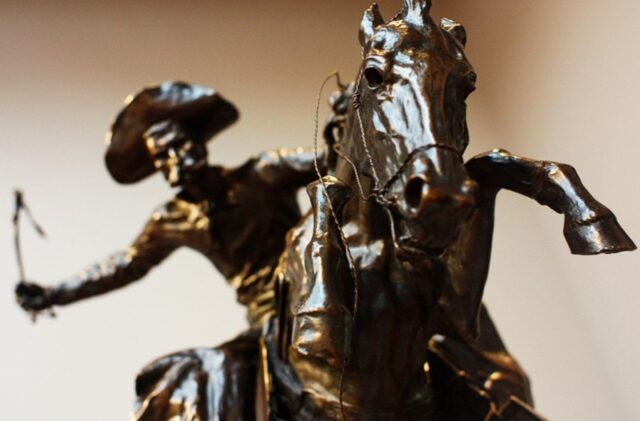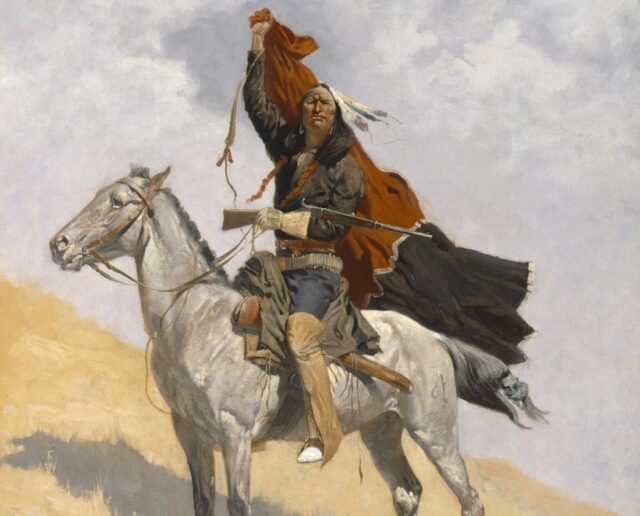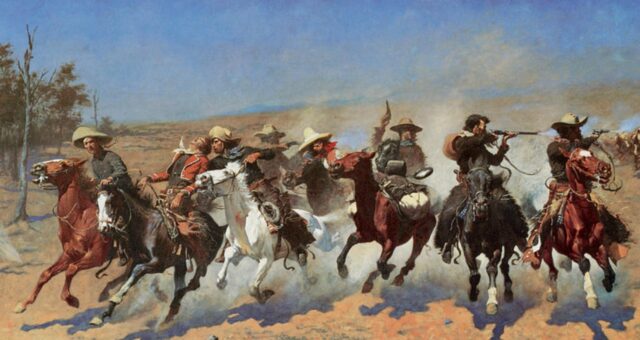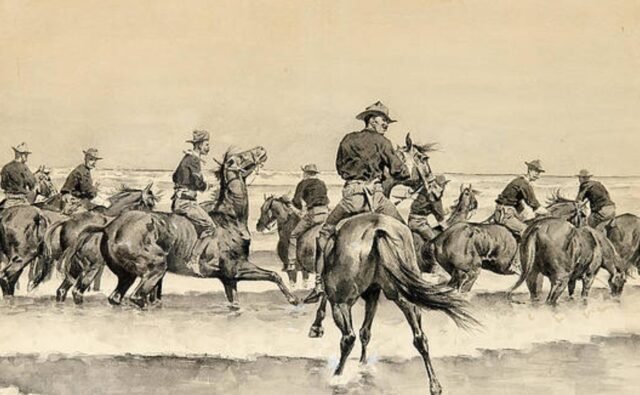
As an art form, sculpting is often underappreciated compared to the popularity of painting.
Even though it is a more difficult and technical skill to master, for whatever reason, sculpture has never quite captured the hearts and minds of people the same way paintings have.
For many artists, though, the two forms of expression went hand in hand, and as a result, there are dozens of artists throughout history that were just as talented at sculpting as they were at painting. American Wild West chronicler Frederic Remington was one such artist.
Frederic Remington was a well-known sculptor and painter specializing in depicting scenes involving cowboys, Indians, and the United States cavalry.
His collection of work is smaller than all the other famous American painters of the period.
Nevertheless, his paintings can be seen as quality over quantity, and his sculptures are among the best in American art.
The Bronco Buster (Sculpture)
The image of the Bronco Buster is by far one of the most iconic and important symbols in all of American history. The image represents so much concerning both cowboy culture and the grit and determination it took to settle in the Wild West and for civilization to thrive there.
For those not familiar with the image, let’s take a moment to explain it and what exactly it represents. Bronco busting is the term used in cowboy slang to describe the difficult task of taming a wild horse and training it to be ridden. It is an image used countless times in American culture and is no doubt one you’ve seen before.
Remington’s Bronco Buster is just one of several similar sculptures he dedicated to the difficult and dangerous act throughout his artistic career. He also painted a couple of paintings on the subject and, with the combined artwork for other painters, firmly established it as the ultimate cowboy image.
The Blanket Signal (Painting)
Even though Frederic Remington art focused on promoting the American cowboy culture, a sizable portion of his overall work collection also commemorated the other major cultures present in the west, mainly the Native American and Mexican contingents.
Native American culture was fascinating in particular, mainly because it was so totally different from the standard European culture inherited by the American settlers.
Native American culture valued bravery, honour, and the warrior spirit as its major tenets, and these qualities are on full display in Frederic Remington’s paintings.
There is an action/superhero quality to their composition, and the same can be said for his cowboy paintings too.
Both are like something straight out of a movie. Take the painting of The Blanket Signal, for example.
In the painting, a Native American sits stoically on horseback. With a gun gripped in one hand and raising a blanket over his head with the other.
A strong sense of pride and courage emanates from the warrior, traits the Indians were known for.
Off The Range (Sculpture)
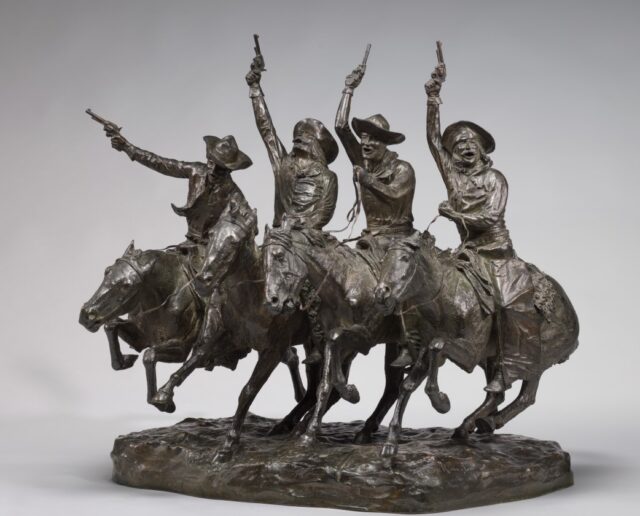
During the last few years of Remington’s life, sculpting became more of a focus and was the primary outlet for his artistic expression.
As a result, many of his greatest and most well-known sculptures were crafted during this twilight period in the artist’s career.
Almost all of his most celebrated sculptures were created in 1900, some fifteen years after he started as an artist.
Some of these include The Outlaw, The Cheyanne, The Sargent, The Savage, The Old Dragoons, and the monumental piece, The Cowboy, to name just a few.
Off The Range or Coming Through The Rye, as it is also known, might just be the best one of them all. It features four gun-toting cowboys on horseback, all shooting their pistols in the air, and is very reminiscent of his most famous painting, A Dash For The Timbers.
A Dash For The Timbers (Painting)
A Dash For The Timbers is Remington’s most famous cinematic painting.
When you imagine the Wild West in your mind, the first thing that probably pops up is the image of a wild shootout taking place on horseback.
This is the exact scene A Dash For The Timbers shows.
This gripping Remington western painting, alongside a couple of others, was the main catalyst for the conception of the Wild West movie genre that became popular in Hollywood some years later.
This painting is also one of the best examples for highlighting one of Remington’s greatest skills as an artist, mainly his talent for painting horses.
With this combination of skill and gripping excitement, it is easy to see why A Dash For The Timbers is regarded as his most celebrated piece of artwork.
The Legacy Left Behind
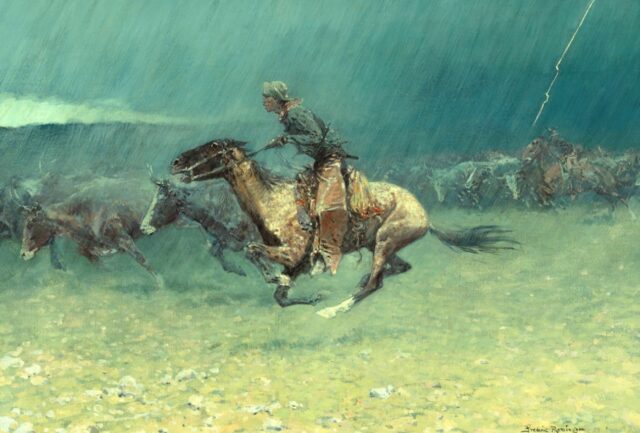
The more you learn about Remington, the artist, the more you will appreciate the significance and brilliance of his art.
For their historical relevance, his paintings are a vitally important source. But, as pieces of art, regardless of their relevance, they are wholly gripping works and would look great hanging on any wall.
Although Remington was not exactly an Impressionist painter per se, his paintings leave a distinct impression on its viewer.
Frederic Remington’s art features a highly moral undertone as impressions of elements such as honour, courage, duty, and adventure practically pour off the canvas.
His sculptures also share this same spirit of courage and a high standing within their engravings.
These Impressionist aspects of his work, combined with many more, are why Frederic Remington is remembered as the gold standard of Old West art today.
Frederic Remington will go down in history as the premier American old west painter and sculptor.
He created over 1,000 drawings and paintings and over two dozen sculptures during his career. Each is a little piece of history and a timeless celebration of the human spirit.

